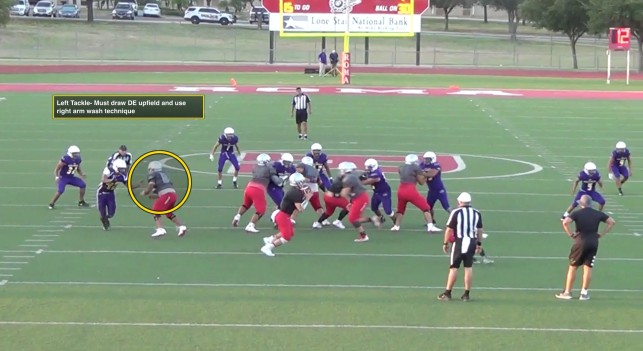By David Porras Jr.
Offensive Coordinator
Roma High School (TX)
Twitter: @deelow127
Teaching gap blocking schemes in your offense can help add new wrinkles to your offense. Gap blocking allows our offensive line to understand exactly whom to block in any front. If your offense runs sprint out passing plays, installing a sprint draw to your offense will help you keep defenses honest. Our sprint out passing plays are very important to our offense, so adding a sprint draw play was a must. We run our sprint draw typically when we have a long yardage situation and/or against teams that are not as aggressive with their blitz packages. Sprint draws are also another great way to get the ball to your running back showing full flow and countering back. In addition, sprint draws are another great play to attack bubbles in defensive fronts.
Reasons to install a sprint draw into your offense.
- Great way to attack defenses that rotate their coverage to your strength.
- Shows full flow in the backfield and countering back.
- Great against aggressive pass-rushing defensive ends.
- Protects your sprint out passing game
- Creates great angles in your blocking scheme.
- Simple scheme

Coaching Points vs 3 common fronts:
4-3 Defense: the main coaching point when we face a 4-3 front is the left tackle inviting the defensive end to go up the field which allows us to open up the gap even more.
3-3 Stack Defense: the main coaching point when we face a 3-3 front is getting our down blocks and not allowing any penetration by any down linemen.
50 Defense: the main coaching point when we face a 50 is again the left tackle inviting the defensive end to up the field.









